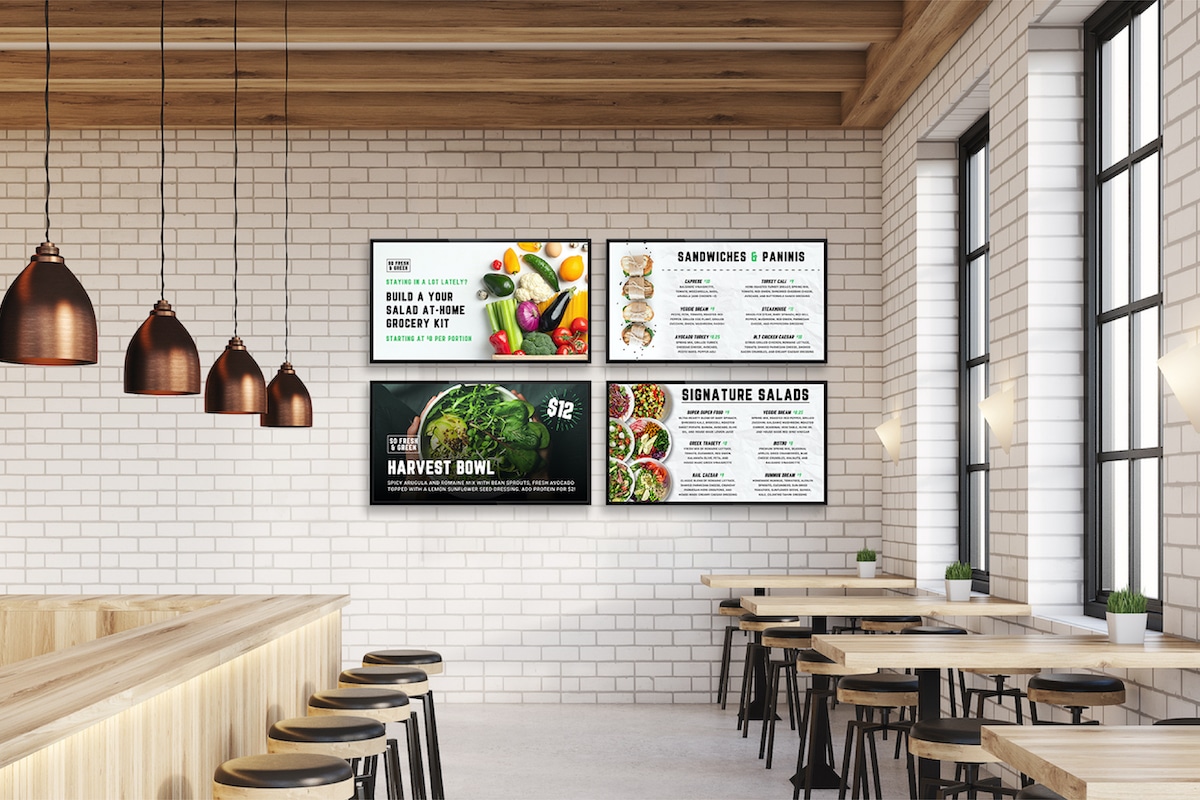Because so much has changed so quickly during the pandemic, the need for agility in the quick-service space has never been greater. One tool that has granted operators that agility is digital signage.
In the past decade, digital signage has evolved from an aesthetically pleasing replacement for static menuboards into a dynamic marketing tool that helps gather data and achieve larger check sizes. Never has that been more valuable to quick-service brands than now.
“When we talk about digital signage, we talk about 100 percent compliance,” says Linda Hofflander, chief strategy officer at Skykit, a hardware and software company that helps turn standard screens into digital signs. “Historically, menuboards did not change out very often because you had to print, ship, and then install new graphics at each location. But digital menuboards don’t take long to pay for themselves because they ensures that every location is always 100 percent compliant with a brand’s image, messaging, and goals.”
Here’s a look at three ways digital signage has established itself as one of the very best resources operators can count on to help them traverse the ever-evolving quick-service industry.
Growing Sales
Seamless dayparting is one of the many advantages digital menuboards have over static menuboards. Being able to show different menu items at different times of day helps ensure a customer-friendly experience that drives satisfaction and sales.
“Digital menuboards should be focused on what you’re trying to sell and when you’re trying to sell it,” Hofflander says. “If it’s dinnertime and you’re packaging up family dinners, that should be displayed prominently in a space that will help sell it. You certainly don’t want guests to be seeing lunch meals that cost less and make dinner feel relatively pricey.”
Digital menuboards also allow for flexible pricing based on daypart. For example, a dessert might cost less during lunch than it does during dinner. This can help achieve sales during lunch, when a patron might be less likely to jump at a dessert item, while building up check size at dinner.
Brandwide Consistency
One of the reasons corporate office executives love digital signage is the brandwide consistency that it creates. Suddenly, menu changes, updates, and corrections can happen at the click of a button. But even this aspect of digital signage has become more advanced, to where certain regional LTOs, for example, are seamlessly added to the right boards.
Another example would be if a pizza brand uses Skykit’s digital signage content management system (CMS) and serves alcohol at some locations but not all, it could easily use Skykit’s “tagging” system to ensure a wine promotion, for example, only be added to the appropriate, participating restaurants.
“One of the most important aspects of our platform is the ease of use,” Hofflander says. “It helps brands get organized quickly and ensures they don’t get bogged down with complex technology.”
The Universal Tool
Digital signage can also be used as a communication tool between a brand and its customers. That has been pivotal during the pandemic, when finding ways to communicate safety protocols or direction toward things like curbside pickup or extra drive-thru lanes was a key to a successful guest experience. In that same vein, with the right CMS system that displays graphics and video, digital signage is a marketing tool to display LTOs or other items that might help draw traffic off the street and into the drive-thru space.
Digital signage is also increasingly being used as a training tool as a way to ensure employees are introduced to and uphold brand standards. These usages are what make digital signage such a venerable part of the quick-service industry as it moves into the future: it’s the agility, and its ability to offer custom solutions to specific brand needs, that ensures brands are ready for whatever comes next.
“One of the things I love most about this company is that we let our client operators have a seat at the development table,” Hofflander says of Skykit. “We first want to help identify the biggest challenges that they face, and then we help develop the solution based on those needs. There’s no one-size fits all, this is more of a customized approach that helps operators reach their goals and grow their business.”
For more information, check out the Skykit website.
By Charlie Pogacar













